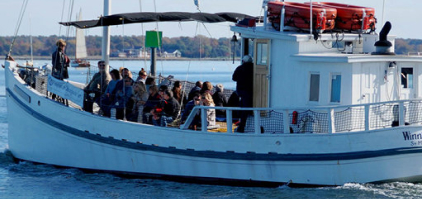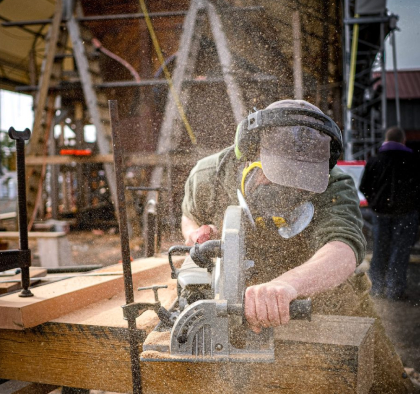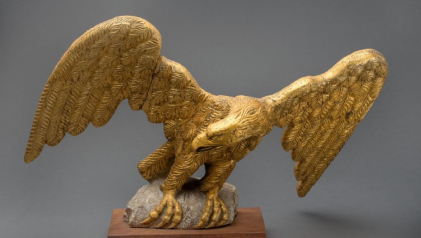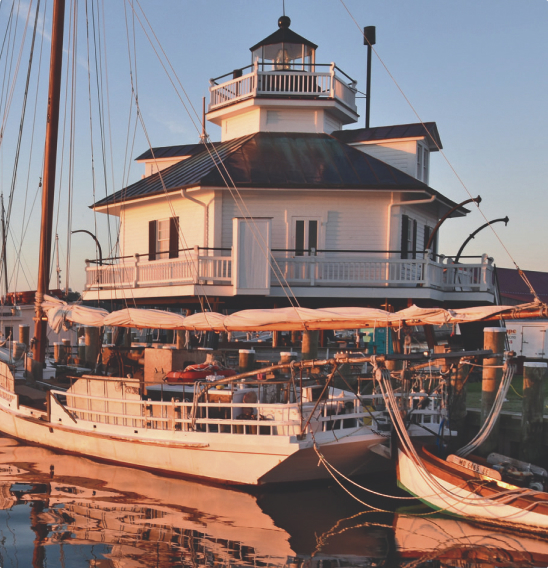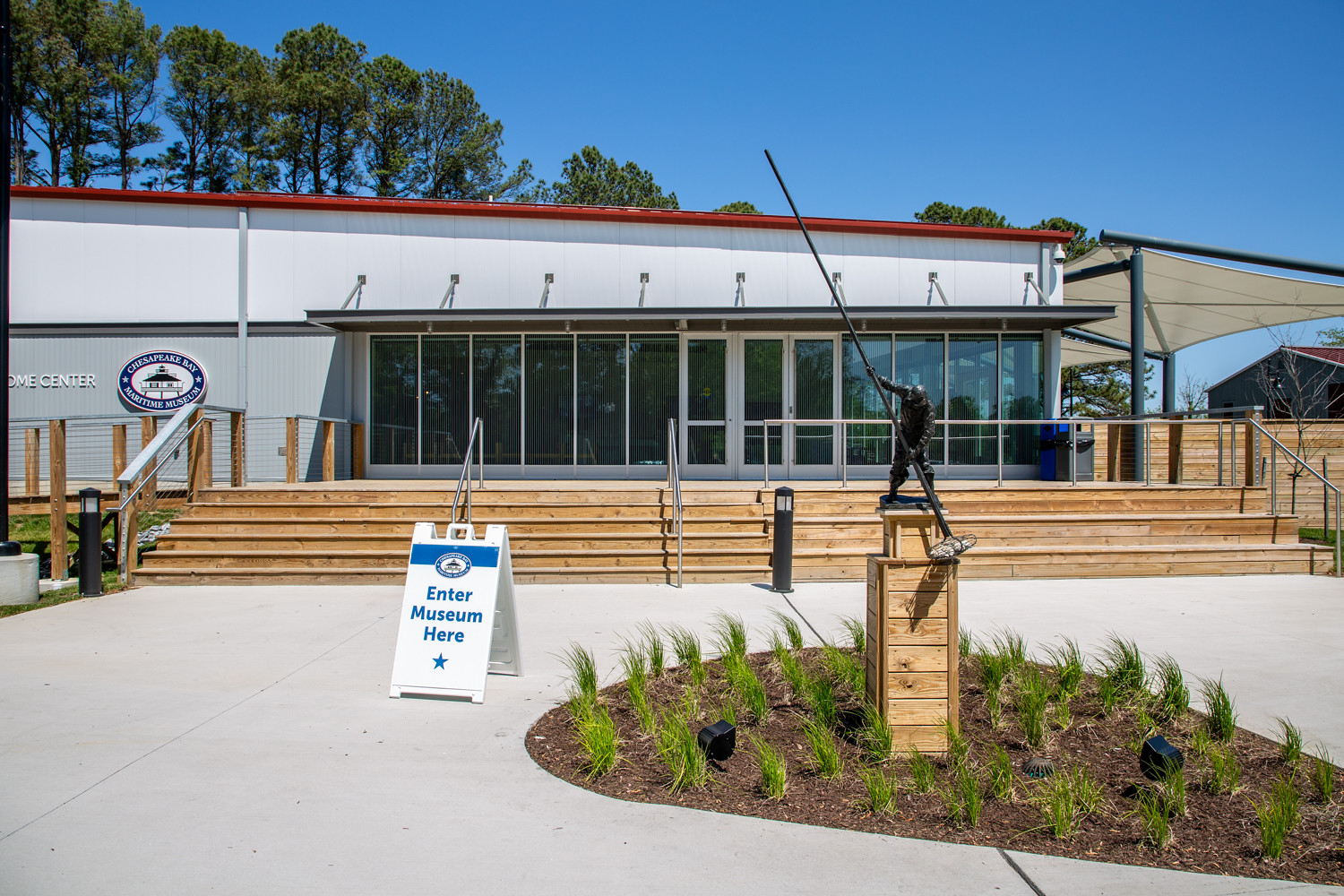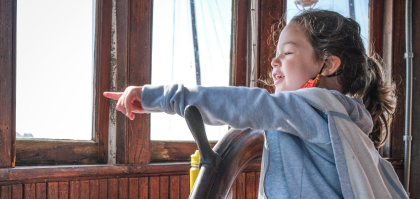Founded on Navy Point in St. Michaels, a Talbot County riverfront town on Maryland’s Eastern Shore, Chesapeake Bay Maritime Museum is the only museum devoted to interpreting the entire maritime region of the Chesapeake. First opened to the public in 1965, CBMM was a project of the Historical Society of Talbot County, which acquired three waterfront houses along St. Michaels Harbor. Within the first few years, CBMM acquired historic watercraft and exhibited them afloat, notably the oyster sloop J.T. Leonard and the log-bottom bugeye Edna E. Lockwood.
CBMM’s 18-acre waterfront campus was once the site of a busy complex of workboats, docks, and seafood packing houses. As seafood industries began closing on Navy Point, land was acquired from the former Coulbourne & Jewett crab and oyster packing house in 1966. By the end of that year, the Hooper Strait Lighthouse, which had been threatened by demolition, was purchased from the demolition contractor for $1,000 and moved to the newly acquired parcel. It opened to the public the following May.
CBMM incorporated as an independent 501(c)(3) nonprofit in 1968 and in 1971 hired its first permanent director, who set the course for expansion. In time, CBMM acquired adjacent acreage fronting Fogg’s Cove and became accredited by the American Alliance of Museums. Recognizing the need to create infrastructure to maintain floating exhibits, CBMM constructed a traditional marine railway in 1974 and a Boatshop in 1977. New, purpose-built exhibition buildings were added, along with several small historic structures, most notably Mitchell House, former home to Eliza Bailey Mitchell, the sister of Frederick Douglass.
Today, the CBMM campus boasts over 35 buildings, 12 of which house exhibitions that are open to the public. The exhibition buildings trace the social, economic, and geological history of the Chesapeake Bay through the age of sail and the steamboat era to the advent of gasoline and diesel-powered engines. Guests can view more than 100 boats and boat models, historical Bay artifacts, and artworks that include a vast collection of watercolors, decoys, guns, and ship’s signboards.
The Norman & Ellen Plummer Center for Museum Collections and Howard I. Chapelle Library houses an extensive collection of Chesapeake resources and archival materials, while CBMM’s collection of Chesapeake Bay watercraft—the largest in existence—numbers about 85 vessels. The collection’s largest vessels are on display in CBMM’s floating fleet. A robust series of tours and educational programs engages preschoolers to adults in innovative ways to experience the history and culture of the Chesapeake Bay region. In CBMM’s working Shipyard, guests can learn about and view the restoration of historic craft, take part in hands-on programming, and observe significant construction projects.
